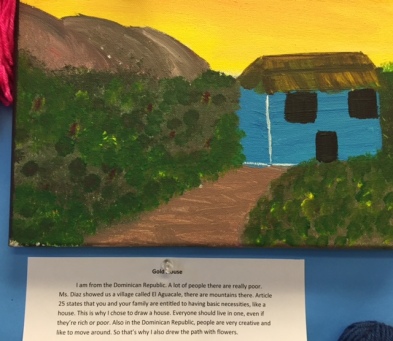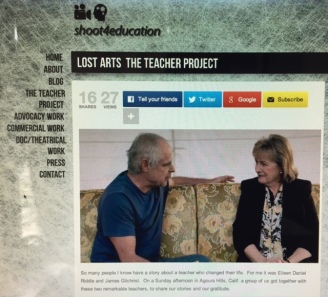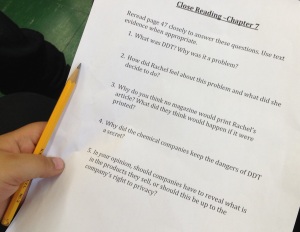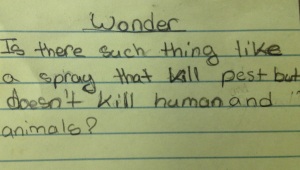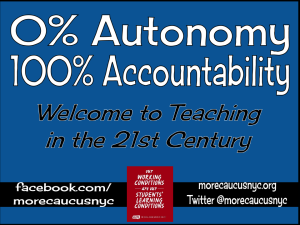Dear Chancellor Fariña,
Welcome back! I am encouraged by your message of bringing back joy into the classrooms. But what about democracy? Here in New York City, curriculum and pedagogy are narrowing in order to prepare students for high-stakes tests that, in my professional opinion, are invalid. The Common Core (CCSS) state tests do not accurately measure what students know and how they have grown both academically and socially/emotionally. In my opinion, the corporate education reform agenda, together with its Common Core package of standards, curriculum and testing, is whittling down the purpose of public education to “college and career readiness,” with a focus on English-language arts and math instruction. At the NYS Senate’s January 23, 2014 Common Core hearing, NYSED Commissioner John King reiterated that the Common Core is needed for the US economy, arguing that it’s what US corporations want. However, any teacher will tell you that they are in this job to make a difference in the lives of children, to show students how to avoid the mistakes made by our predecessors in the hopes of improving the state of the world. We see the critical importance of helping students develop life skills, such as civic-mindedness, empathy and resilience, in addition to teaching them reading, writing and arithmetic.
I wish to draw your attention to the issues in our public schools that currently are most troubling to me. I am a push-in ESL teacher at a Title I elementary school in East New York, Brooklyn, however I started out, in 2006, as a bilingual classroom teacher.
1.) Over-testing – English-language learners (ELLs) in grades 3-8 are particularly encumbered with standardized testing. The NYSESLAT (NYS English as a Second Language Achievement Test) is administered to ELLs right after the grueling Common Core ELA and math state assessments. The NYSESLAT is a lengthy, four-part assessment that tests students’ proficiency levels in the speaking, reading, writing and listening of English. Contrary to what the NYS Board of Regents says, students in grades K-2 are indeed taking standardized tests. For the listening, reading and writing sections of the NYSESLAT, ELLs in grades K-2 are required to answer multiple choice questions by bubbling their answers directly into student test booklets. As an out-of-classroom ESL teacher, my instructional program is, for the most part, cancelled for two months in the spring. From April to June, my days are spent preparing, administering and scoring state assessments.

In addition to April’s Common Core ELA and math high-stakes tests, NYC students are currently taking ELA and math baseline assessments that resemble the content and format of the actual CCSS state tests. Two weeks ago, my 5th grade English-language learners (ELLs) used over four class periods to complete the math baseline. One boy shut down in the middle of the assessment and a girl broke down in tears and ended up in the nurse’s office. While change must occur at both the federal and state levels, you and Bill de Blasio have the power to lower the stakes of these burdensome tests in New York City. A recent Teachers Talk Testing petition asked the mayor to:
1. End promotion tied to test scores.
2. End middle and high school admissions tied exclusively to test scores.
3. End school report cards based primarily on student test scores.
In fact, on December 10, 2013, the City Council unanimously passed Resolution 1394, which calls upon the state of New York to replace high-stakes testing with multiple forms of assessment. Fred Smith, a statistician who worked for the NYC Board of Education as an administrative staff analyst until 2001, is a wealth of knowledge on NYS’s flawed standardized testing program. In a letter to Diane Ravitch, Smith called the 2013 NYS Common Core assessments “…failed, unreliable instruments incapable of serving as a baseline or foundation.” Smith currently advises Change the Stakes, a local group that opposes high-stakes testing, and is an excellent resource.
2.) Undemocratic learning climate – Our freedom to teach is eroding. Teachers had little (if any) meaningful participation in the development and review of the Common Core State Standards. The Common Core package was imposed on us in top-down fashion, and in many NYC public schools, particularly those receiving Title I funding, there’s little wiggle room in applying the standards to learning. In other words, we cannot simply use the standards as we see fit. They are tied to an accountability system (testing) and scripted curricula that ostensibly address the so-called instructional shifts. Teachers increasingly lament that they feel they aren’t giving students what they really need and deserve.
Similarly, many NYC teachers feel they had little input in selecting the new Common Core-aligned curriculum. Pearson’s ReadyGEN ELA Core Curriculum program is particularly unpopular, not because of its disastrous rollout, but because it’s an uninspiring and developmentally inappropriate test prep program. While I mostly like the 5th grade anchor texts – the only part of the program my 5th grade co-teacher and I currently use – I had no say in choosing the books. When will my co-teacher and I squeeze in Rickshaw Girl, a culturally relevant chapter book we read every year that explores the struggles of a young girl in Bangladesh? Also, the ReadyGEN-selected texts are challenging for my ESL students, and from what I can tell the program offers no differentiation in terms of materials. Pearson instructs teachers to expose all students, regardless of reading level and English-language proficiency, to the same rigorous text.
Here’s a sample page from Coming to America: The Story of Immigration, a text that’s being used in the ReadyGEN ELA first grade program.

First grade close reading – ReadyGEN
Will a first grader find joy in closely reading this text and in answering questions in ReadyGEN’s bland Reader’s and Writer’s Journal which, to me, is nothing more than a test prep workbook? What about my special needs ELL who still doesn’t know all of his sounds and letters but is expected to follow along in the text while the teacher reads it aloud? The ReadyGEN first grade journal asks students to write sentences using vocabulary such as gazes, barrier, blended and unique. It also instructs students to explain in writing why America is called a “melting pot” and to rewrite sentences from the text in order to replace proper nouns and nouns with pronouns. In a reading analysis lesson, the written response directions in the first grade journal are worded as follows: What is the central message of A Picnic in October? and Retell three details that teach the central message.
The ReadyGEN ELA program has yielded so few moments of joy in our first grade ESL class that my co-teacher and I have decided to take a break from it during our literacy block. We are currently teaching an ELA unit on monsters, and the classroom has come alive. We selected a variety of engaging monster books, and each day students complete a writing and/or art activity. Why are the monsters called Wild Things? What does it mean to be ‘wild’? Describe the setting of the book. Describe the nightmare in your closet. What makes it scary? How does the mouse trick the forest animals in The Gruffalo? Are all monsters bad? What are the different names (synonyms) for monsters in the books we’ve read? Create your own monster and use adjectives to describe its features. From this, I envision a social emotional learning unit in which we discuss our fears and students describe a time when they were brave. I’m doing something similar with my 5th grade newcomer ELLs who are currently studying the Underground Railroad.
3.) Misuse of funds and inequity– While we are using what we can of ReadyGEN, the student journals are largely being unused. How much money did the NYCDOE spend on this program? NYC Title I public schools, in particular, feel they have no choice but to adopt the subsidized NYCDOE Core Curriculum programs and “free” NYSED engageny.org lessons. Doing so spares them from having to use their limited funds to create and/or to justify the use of alternative Common Core-aligned programs. Also, schools with low test scores find comfort in reasoning that the content and tasks in these programs might appear on the actual CCSS tests. It should be noted that Pearson is the publisher of both ReadyGEN and the NYS ELA CCSS assessment.
Harris Lirtzman recently penned an eye-opening opinion piece on NYCDOE spending for WNYC’s SchoolBook. He called the DOE under Michael Bloomberg “a sinkhole of wasted money.” My understanding of the NYCDOE’s budget is not as deep as Lirtzman’s, but I can think of so many other ways to use the funds. Class sizes are rising, AIS services are being cut and after school test prep sessions have replaced enrichment programs. Wraparound services are also in demand. We need more initiatives to genuinely fight poverty and to provide students who are hurting with counseling. So many of our kids don’t have a safety net and look to school for emotional support. With the emphasis currently on addressing “instructional shifts” and on preparing students for high-stakes testing, the needs of at-risk students are not being met.
4.) Lack of meaningful professional development (PD) – Why is Pearson telling us how to teach? Teachers report that the ReadyGEN PD sessions they regularly attend are ineffective. In addition, teachers are being asked to analyze tests that they themselves didn’t create, and collaborative planning time is being sacrificed so that teachers in grades 3-5 can score the above-mentioned baseline assessments using a non-teacher created rubric. I have lost count of the number of PD sessions I’ve attended on Danielson’s Framework and on the Common Core State Standards.
Teachers would rather spend time working together to create lessons, gather materials and share resources. We learn best from one another. Outside of my school, I look at Boston’s Mission Hill School, which was founded by Deborah Meier in 1997, for alternative techniques to the ones imposed on us. After watching the inspirational video series A Year at Mission Hill, I started writing a column on teachersletterstobillgates.com in which I showcase the school’s rich project-based, collaborative curriculum and inclusive community-building practices. I call my project Freedom to Teach, Freedom to Learn: A Year at Mission Hill.
Here in New York City, I recently attended the More than a Score: Talk back to Testing forum that was organized by Change the Stakes and the Movement of Rank and File Educators (MORE) of the UFT. I left feeling inspired and hopeful. Participants feeling demoralized by high-stakes testing found the day to be soul-cleansing; one even declared that we should “…walk out of here and start a new school system.” Jia Lee, a teacher/parent at Manhattan’s Earth School, shared with us the 4th/5th grade immigrant study curriculum that she and her colleagues designed. I learned from Jia that through socially and culturally relevant pedagogy, her school, which is part of the Children First Network 102, creates their own project-based curricula and portfolio-based assessments. The Earth School has also effectively eliminated the ranking and sorting of kids by using written narrative reports to convey student performance rather than traditional report cards.

Those of us saddled with test prep curriculum, like ReadyGEN, and the NYC Performance Assessments, which exist solely to satisfy the Measures of Student Learning (MOSL) component of the new teacher evaluation system, do not have sufficient space in which to collaborate in authentic, meaningful ways. We have fewer opportunities to put our own stamp on the learning taking place in our classrooms. It breaks my heart that students in my district are not getting the same kinds of educational experiences that have existed long before the reign of the Common Core era at the Earth School and at other CFN 102 schools like the Brooklyn New School (P.S. 146) and Park Slope’s P.S. 321. Many NYC educators are unaware of the autonomy that these NYC public elementary schools enjoy. In designing quality curriculum and assessments that address the whole child, we should reject what corporate education reform is peddling and instead draw from our most valuable resource: our schools.
Kind regards,
Katie Lapham, NYC public school teacher

